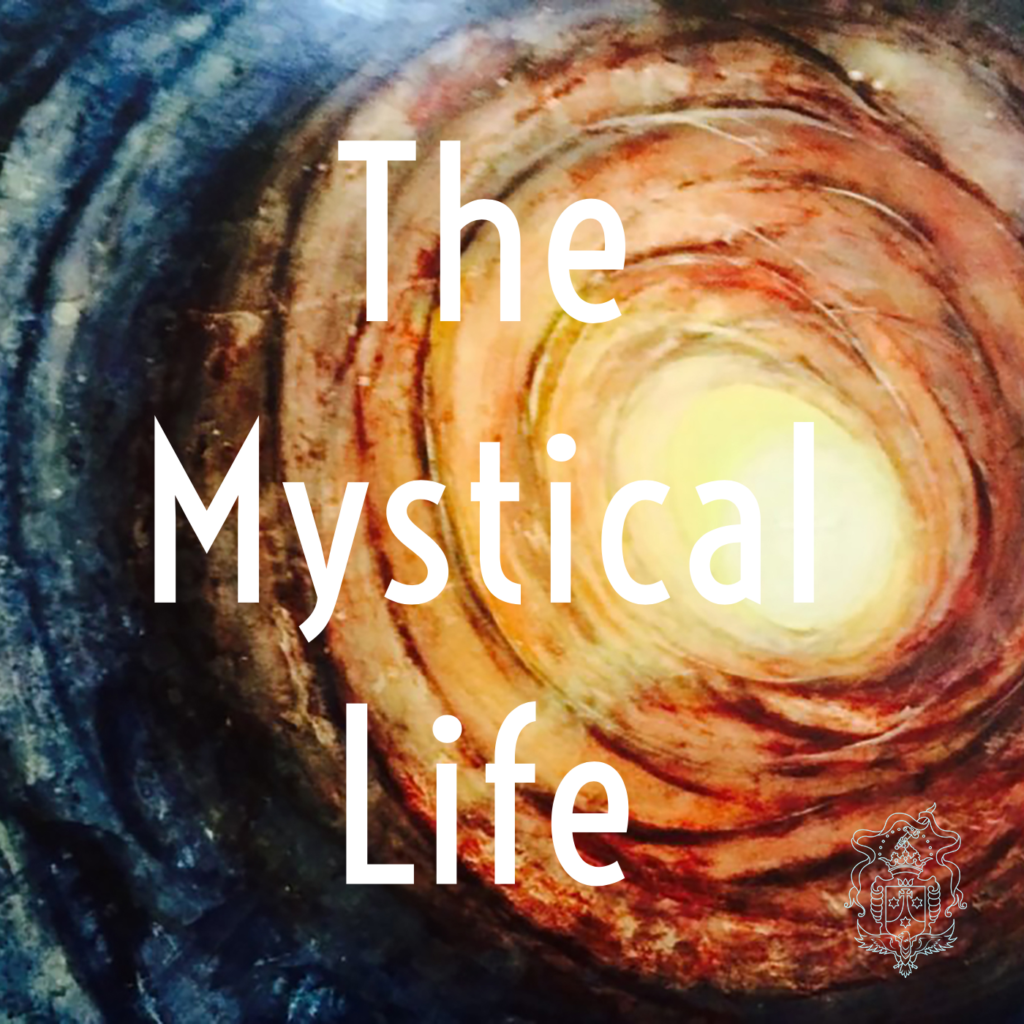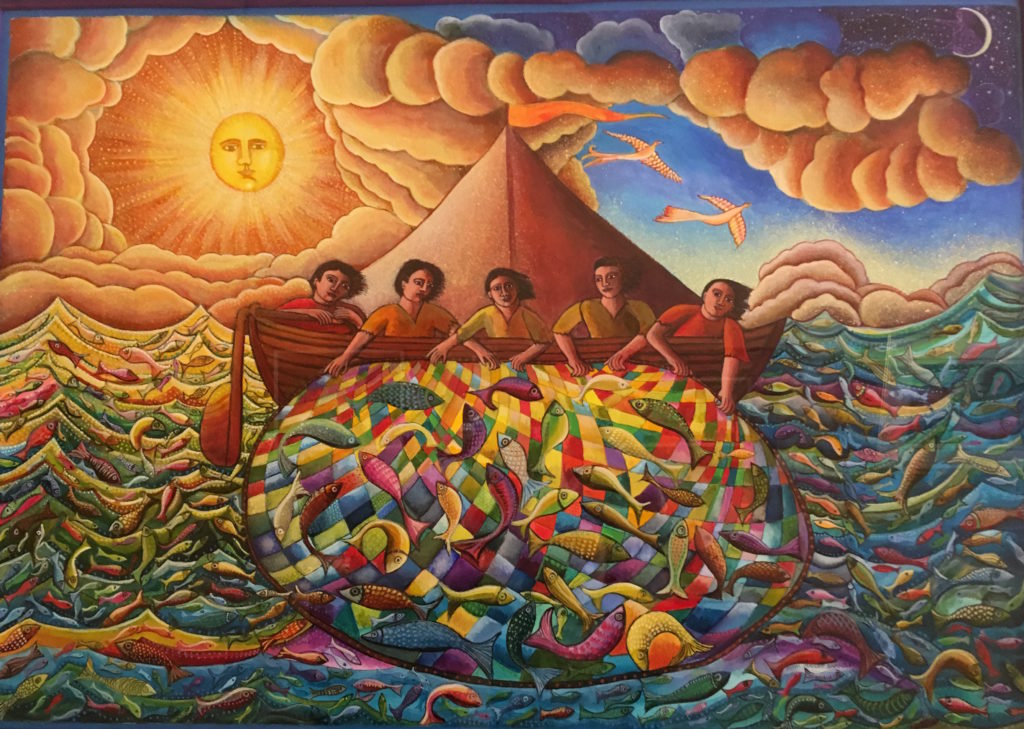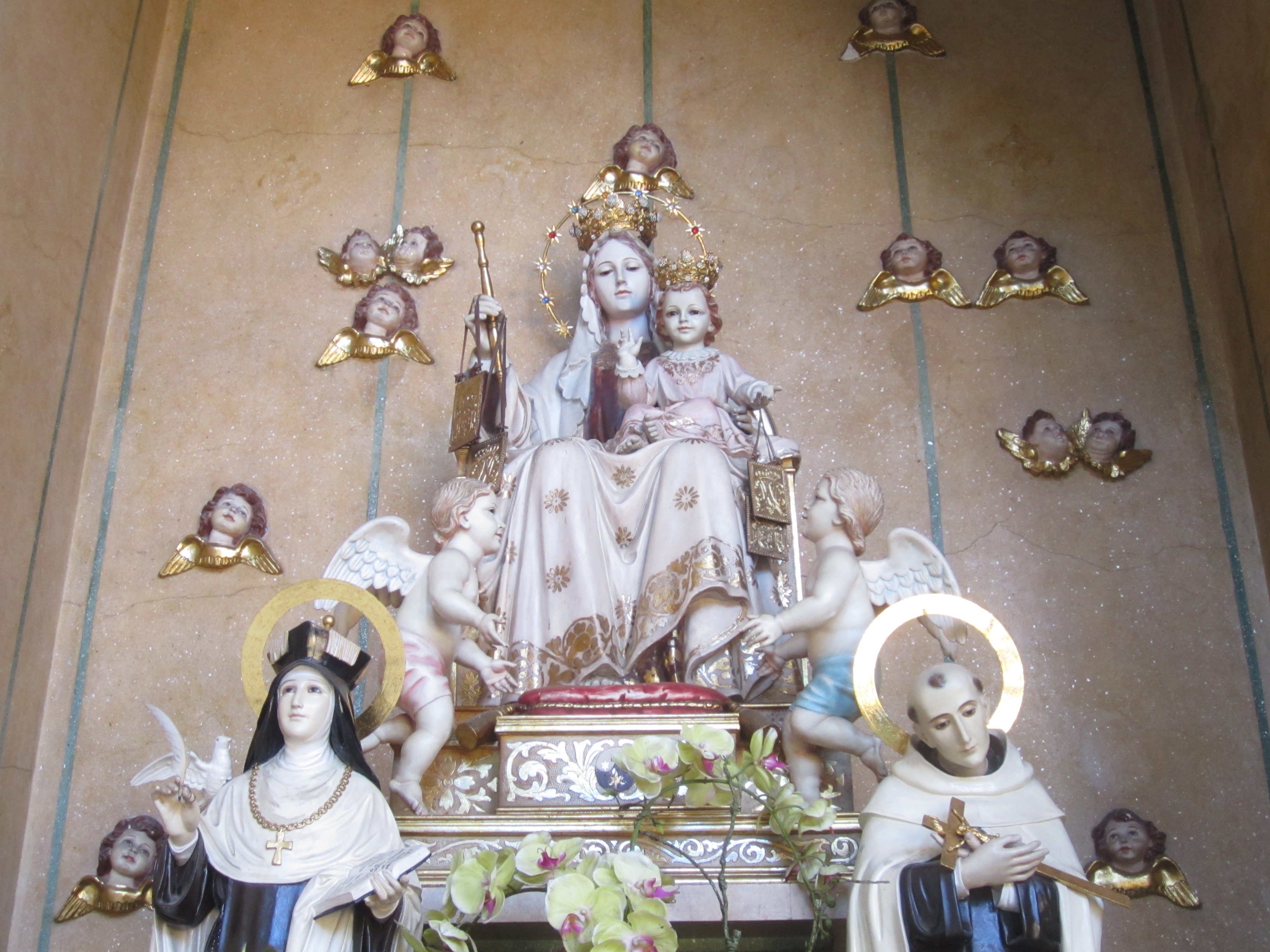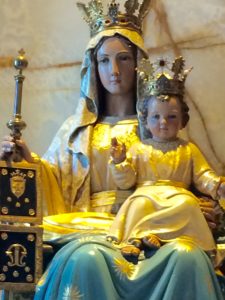https://www.youtube.com/watch?v=cZKttGdQz3Q
Tag Archives: Carmelites
Welcome to “The Mystical Life”
Welcome and SUBSCRIBE to our new podcast called “The Mystical Life.” We’ve just launched a new way for you to take Carmelite spirituality and teaching with you on the road.
In our first podcast, Father Robert Elias Barcelos explains that true holiness and joy come from abiding and sharing in perfect Love, through the power of the Holy Spirit, as exemplified by Saint John of the Cross
You can listen online here, or just search for “The Mystical Life” on the Apple Podcasts app or iTunes, and you’ll see this image:

When you subscribe to the podcast, you’ll automatically get all new episodes as we create them.
Father Robert Elias, OCD: ‘Do you love me?’
Father Robert Elias, OCD
NOTE: I am reposting this to include the audio. All posts on The Speakroom in June will come from previous posts. Our team needs this month to work on back-end projects like developing more social media presence through Instagram, Facebook, Podcasts, and products on Shopify.
JOHN 21: 1-19
At that time, Jesus revealed himself to his disciples at the Sea of Tiberias.
He revealed himself in this way. Together were Simon Peter, Thomas called Didymus, Nathanael from Cana in Galilee, Zebedee’s sons, and two others of his disciples. Simon Peter said to them, “I am going fishing.”
They said to him, “We also will come with you.”
So they went out and got into the boat, but that night they caught nothing. When it was already dawn, Jesus was standing on the shore; but the disciples did not realize that it was Jesus. Jesus said to them, “Children, have you caught anything to eat?”
They answered him, “No.”
So he said to them, “Cast the net over the right side of the boat
and you will find something.” So they cast it, and were not able to pull it in
because of the number of fish.
So the disciple whom Jesus loved said to Peter, “It is the Lord.” When Simon Peter heard that it was the Lord, he tucked in his garment, for he was lightly clad, and jumped into the sea. The other disciples came in the boat, for they were not far from shore, only about a hundred yards, dragging the net with the fish. When they climbed out on shore, they saw a charcoal fire with fish on it and bread. Jesus said to them, “Bring some of the fish you just caught.”
So Simon Peter went over and dragged the net ashore full of one hundred fifty-three large fish. Even though there were so many, the net was not torn.
Jesus said to them, “Come, have breakfast.” And none of the disciples dared to ask him, “Who are you?” because they realized it was the Lord.
Jesus came over and took the bread and gave it to them, and in like manner the fish.This was now the third time Jesus was revealed to his disciples
after being raised from the dead.

One of the most popular books in the past is The Five Languages, a book about how people by their character, communicate love. Most of us are better at one or two rather than all. The languages are
- Words of Affirmation – People who speak words of life in their ordinary life, are able to see the Lord in the other person; they can acknowledge a person’s beauty and purpose, and draw it out of them. They validate a person’s sense of being lovable; this gift is not that common
- Touch – Giving expressions of love through embrace and touch
- Actions – Giving through works of devotion & service; this gift is usually found in men (as in household repairs). Doing something that is helpful.
- Gift giving – The ability to find and give gifts that expresses the essence of a person
- Quality Time –Spending important time together. Even though it doesn’t feel like we’re doing something productive, I’m here for you.
The gift of Quality Time is the lens through which we must understand prayer and contemplation – being with God.
In today’s Gospel Jesus asks Peter the most important question – Do you love me? The first two times he asks, Jesus says, in the Greek translation, “Do you agape me?” He was asking Peter to go to the next level of living in His love. Agape is that self-sacrificing, self-annihilating love. It is a radical, divine love that we’re all capable of –but it requires stripping. It is the white, hot love that is divine and eternal, yet it happens now.
Agape love is summarized in John 15, ‘That you lay down your life for the one you love.’ There has to be a sacrifice, a holocaust and cost to self for the other. As a result, the gift of self is amplified.
Our Lord asks this important question, ‘Do you love me?’ – to Peter, who is being put on the spot in front of his friends by the charcoal fire. And he is being humbled by it that he may learn the lessons of humility in order for him to truly love.
The last time Peter was at charcoal fire, he denied having known our Lord, when he had just earlier in the day, sworn that he would do anything for Him. Peter’s disordered self-love prepared the way for his fall, though he really did love Jesus. He really did love the Lord, but Peter was fearful.
Peter reveals that fight between flesh and spirit in every human being, the weakness of humanity left to ourselves apart from the grace of God. Left to ourselves, we’re no better; like Peter, our real character and virtues are seen in positions of adversities.
But Peter was transformed after his own experience of cowardice and weakness apart from Our Lord. We have to have a true sense of who we are apart from God so that pride can’t get in the way of real love –humility allows our soul to be better cultivated for a lasting fruit of Love that doesn’t come just from human motive, but from God.
In this exchange, Jesus calls Peter Simon, Son of John. Why? Peter represents rock; Simon represents sand. Peter is the title he had been endowed with by Christ- ‘the boss in charge,’ ‘the head hancho.’ Jesus doesn’t call him by his title but by his humanity. He calls him by his old name, by which those who knew him as a child knew him, and reminds Peter who he is left to himself.
Jesus wants to speak to the child, the vulnerable in Peter because He wants to bring strength in his weakness. He is bringing him back to Galilee, his first calling and first love. As you remember, Jesus called Peter first as he was fishing. Now, He is renewing Peter’s calling at a time when Peter was about to give up his vocation, and just wants to go back and continue fishing.
Jesus asks ‘Do you love me’ three times to make reparation for the three times Peter denied him. In so doing, He gives Peter the chance to renew his calling and to repair his vocation to Love. Now, Peter learns the humility and has the proper foundations to be a servant of Love.
In the Greek translation, Peter does not respond with the agape word for love, but with the word, eros, which is a friendship love. Before, when he overestimated himself, he could say that he could give Jesus the agape love. But now, after having been humbled, he is finally acknowledging and can admit that he can’t love Jesus in the way Jesus has loved him.
The third time, Jesus asks the question, He says, ‘Do you eros me,’ and that is when Peter is able to say, ‘Yes, Lord.’ This shows us that Jesus accepts us as we are and not as we should be. The Lord knew that Peter had no more to give and wasn’t ready to give an agape love, but He still appointed him to be the leader and shepherd of His Church.
Jesus accepts us as long as we are giving all that we can give, and it is His Love that allows as to grow in Love. According to Saints John of the Cross and Teresa, we are unable to give that agape love until the 5th mansion, which is where the Holy Spirit is doing all the work. We can’t get to agape love without the Holy Spirit.
But before that, God has to purify us, and we have to be willing to undergo the painful, humiliating journey.
Eventually, at Pentecost, through the outpouring of the Holy Spirit, after he had been purified, Peter is able to love with the agape love. After Pentecost, Peter is able to rejoice that he was counted worthy to suffer insult for the sake of Jesus’ name. Only the agape love of the Holy Spirit was able to bring this about in Peter and can bring it about in us.
Jesus’s love is so profoundly and scandalously humble. In the Book of Revelations, we see the lamb being glorified and exalted. Why not the eagle or the lion? The lamb is the sacrificial animal, which represents the sacrifice of Love. The Most High became the most low for our sake. He didn’t need to do it; God doesn’t need anything. But He did it all for us. He says, ‘I am giving my life – for those whom I love.’
The whole universe exalts in the victory of the Lamb.
From the shore of Galilee, Jesus asks the disciples to put the net on the right side of the boat. The moment Peter obeyed, he received a super abundance of grace.
Peter had to be stripped and emptied, which is represented by his ‘stripped’ clothing during this account, when he tucks his garments and swims toward Jesus after recognizing Him. Similarly, once we choose God’s will over ours, and strip ourselves, that is when we really begin to live a more abundant life, through the Lord’s provision and not what we do ourselves.
At first the disciples didn’t recognize Jesus, which represents a spiritual journey that involves a dynamism of awareness and mystery. They only realized who he was at the breaking of the bread and at the feeding of fish, and when He acknowledges that He will feed them with that agape love.
The humility of God is so radical. When St. Augustine had not yet discovered God in his life, when he was seeking truths in the wisdom of the day and all its eloquence, he was at first disappointed by Scripture; it was too simple and lacked the language of the sages he studied. However, as he grew in faith, he discovered the hidden wisdom of Christ that exuded from scripture.
That is how God always works – he chooses the humble instruments to hide His grace. Only the humble can find the hidden treasure.
In Eastern iconography, the paintings are stark, but they are a bridge to prayer. Only when a person enters into the simplicity of the image in prayer, can they experience God’s grace and beauty in the icon. Only through prayer can that be received.
And there’s nothing more humble than the Eucharist, which is where we receive God’s agape love. He calls all of us to be his lambs and to live a life of Love. He trains us through a life that is nourished by sacrifice; this is the action of God’s movement in us.
The measure by which we unite ourselves with the light of Love through The Lamb, and the transformation of love in this life, is the measure that we will we share in His blessing forever and ever.
SOURCE: Santa Clara Order of Discalced Carmelite Seculars (OCDS) Formation, Father Robert Elias Barcelos, May 2019
Father Robert Elias Barcelos, OCD: Our Lady of Mt Carmel Novena, Day 5

Carmelite Monastery, Cebu Philippines
What does the title, Our Lady of Mount Carmel, represent? How does this title fit and represent Mary? Our Lady is the patroness of contemplatives. Through the title of Our Lady of Mount Carmel, we seek her assistance through our contemplative lives.
Our Church has several litanies of Our Lord and of the Blessed Mother, which try to express the grandeurs of the grace of God. Contemplating and praying the litanies is like looking at a crystal, and looking at the Son and Our Lady at different angles. The Litany to Our Lady of Mount Carmel, or the Litany of Loreto, for example attempt to give us a glimpse of who Mary is in God’s eyes.
However, these litanies cannot express it all. In God’s eyes, Mary is tremendous and we can never give her more honor than the honor that Jesus gave to her. Our separated brothers and sisters have a genuine love for Our Lord, but they do not understand why we place so much importance in Mary. But as a vessel for our Lord, she surpasses every human being in purity and perfection.
Think of Mary in Scripture. There, she is depicted as trustful and pondering on the Word. When Simeon told her that a sword would pierce her heart, she remains quiet, and ‘keeps these things in her heart.’ At the foot of the crucified Christ, she ‘wept’ silently, yet she never turns her eyes away from her son. We too must be trusting, silent, obedient, and clinging to the promise of God’s presence. She is the patroness of those seeking union and quiet in God.
The meaning of the word, Carmel, is ‘The garden of God.’ Carem – el. Carem means garden, a lush orchard; el stands for Elohim. Those of you who have visited the Holy Land know that Mount Carmel is not just a single mountain. Carmel is a whole mountain range that runs alongside the Mediterranean Sea. It has the highest elevation and its soil is very rich. Lush flowers and plants can be found there, a fertile ground for life. From the time of Elijah to today, people have sought the mountain of Carmel for prayer, and to seek union with God.
Part of living the contemplative life is for our soul to be a fertile ground and soil so that our lives may bear fruit through grace. Mary is the model and guide par excellence, for this life of love and contemplation. She still had to endure the pain of obscurity and suffering, but through her life of prayer and obedience, her beauty stands out among humans as magnificent and insurpassable. We too, as followers of Christ are called to be bathed in the beauty of God’s glory. Our Lady of Mount Carmel, pray for us.
(Source: May Santa Clara OCDS Meeting)
——————————
Click the image below for the Novena prayer to Our Lady of Mount Carmel, followed by: Our Father, Hail Mary, and Glory Be.
Our Lady of Mt Carmel, Feast Day July 16

